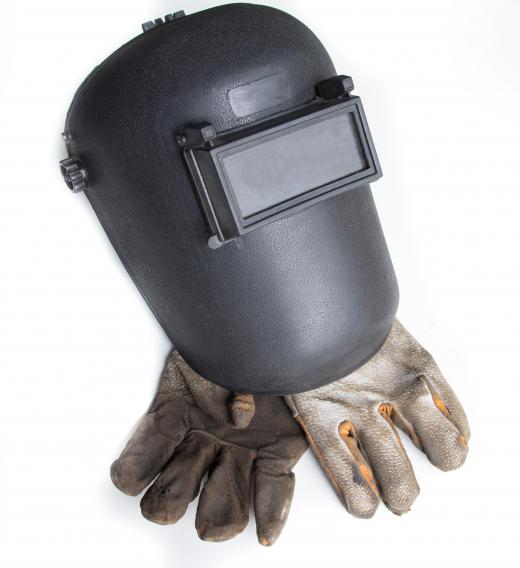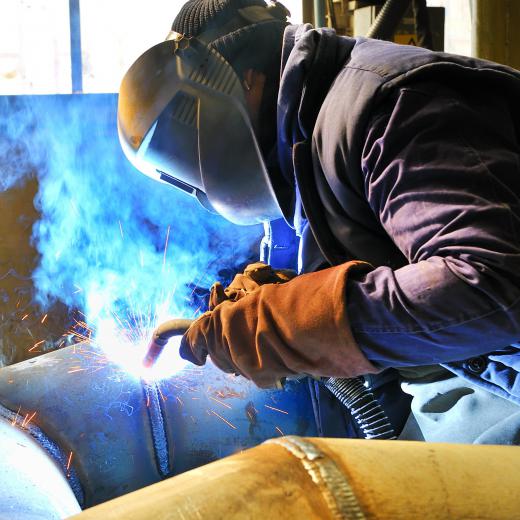Compared to other industrial jobs, welding is fairly dangerous. The occupational and health hazards of this job can be avoided with proper equipment, safe materials, and a few common sense measures. Risks associated with welding include asphyxiation due to dangerous inhalants, skin and eye damage due to ultraviolet light, electrical or chemical fires, and long-term negative effects from fumes.
Most people think that sparks and arcs are the most dangerous aspects of welding because they call attention to themselves, but they are only one risk. The brightness of the sparks, with their strong UV light, can cause cancer in unprotected eyes and skin. Yet there is a wide range of equipment, such as auto-darkening helmets and thick gloves, to reduce exposure. Also, sparks are not usually hot, yet general precautions should be taken to keep wood or other combustible material out of the range of the welder's arc. Setting heated metal on a flammable surface is more likely to start a fire.

The leading cause of health problems in welders relates to carcinogenic or toxic chemicals. These chemicals might be in a sealant or coating over the metal surfaces to be welded. Extreme heat releases molecules into the air, where they are easily inhaled.
Certain substances might also be embedded in the material itself, like lead, cadmium, manganese, chromium, or nickel in metals like stainless steel, copper, or zinc. These metals should only be welded with extreme caution. Make sure you know exactly what they contain and work in an area with a lot of air circulation. Symptoms from inhalation can range from a temporary flu-like sickness to major damage to lungs, liver, and other organs. For instance, manganism from manganese exposure is related to Parkinson's Disease.

Even when you are careful with regard to sealants and varieties of metals, the process of welding always produces other dangerous gases. For instance, a variation of oxygen called ozone is created with every arc. Ozone exists naturally in the atmosphere, but large concentrations of ozone displace oxygen. If you work in an enclosed space, ordinarily safe gases can become too concentrated and cause edema, filling your lungs with water. Ozone, nitrogen oxide, and carbon dioxide build up, making you pass out, hit your head, or suffer brain damage.
